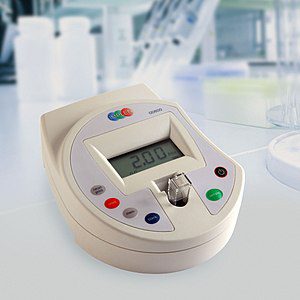Microbial growth studies are a cornerstone of microbiology and biotechnology research. Whether you’re developing new antibiotics, optimizing fermentation processes, or studying the behavior of microorganisms in their natural environment, accurately measuring microbial growth is essential. One widely used technique in these studies is the measurement of optical density at 600 nanometers, known as OD600. In this article, we’ll delve into what OD600 is, why it’s crucial in microbial growth studies, and how to make the most of this versatile tool.
What Is OD600?
OD600 stands for Optical Density at 600 nanometers. It’s a measure of the concentration of cells or particulate matter in a liquid sample, and it’s determined by the amount of light that is absorbed or scattered by the particles in the sample at a specific wavelength, which in this case is 600 nm. OD600 measurements are typically made using a spectrophotometer, which emits a beam of light through a sample and detects how much of that light is absorbed by the cells or particles.
In the context of microbial growth studies, OD600 is primarily used to estimate the cell density or biomass of a culture. As microbial populations grow, they become denser, leading to a corresponding increase in OD600. This makes it a valuable tool for monitoring the progress of a culture and understanding how different factors affect microbial growth.
Why Is OD600 Important?
- Real-Time Monitoring: OD600 measurements provide researchers with a way to monitor microbial growth in real-time without disrupting the culture. By simply taking a sample and measuring OD600, scientists can track the progress of a culture over time.
- Quantitative Data: OD600 offers quantitative data about cell density. This information is crucial when comparing different growth conditions, assessing the impact of environmental factors, or evaluating the efficacy of growth-promoting substances.
- Non-Destructive: Unlike other methods, such as colony counting or cell plating, which require culturing on solid media, OD600 measurements are non-destructive. This means you can continue to grow your culture for further experimentation after taking a measurement.
- High Throughput: Spectrophotometers are available in high-throughput formats, allowing researchers to measure OD600 for multiple samples simultaneously. This efficiency is valuable in large-scale experiments or industrial applications.
How To Measure OD600?
Measuring OD600 is a relatively straightforward process, but accuracy is essential. Here’s a step-by-step guide on how to measure OD600 effectively:
- Prepare The Sample: Take a small sample (usually 1-2 ml) of your microbial culture using a sterile pipette. Be sure to mix the sample thoroughly to ensure a representative measurement.
- Blank The Spectrophotometer: Fill a cuvette (a small, transparent container) with the growth medium or solvent used in your experiment. This will serve as a blank reference. Place the blank cuvette in the spectrophotometer and set the wavelength to 600 nm.
- Measure The Sample: Place a clean cuvette containing your sample into the spectrophotometer. Record the OD600 reading. It’s essential to use the same type of cuvette for both the blank and the sample measurement to ensure accuracy.
- Calculate OD600: Subtract the OD600 reading of the blank from the OD600 reading of your sample to obtain the final OD600 value. This value represents the optical density of your microbial culture at 600 nm.
Interpreting OD600 Data
Interpreting OD600 data is a critical aspect of microbial growth studies. The OD600 value obtained from a spectrophotometer is a dimensionless number that represents the turbidity or cloudiness of the sample at 600 nm. Here’s how to interpret OD600 data:
- Low OD600: A low OD600 value indicates a low cell density or biomass in the culture. This could be due to factors such as slow growth, poor nutrient availability, or the early stages of a culture.
- Mid-Range OD600: A moderate OD600 value suggests that the culture is in the exponential growth phase. This is typically the phase where cells are growing rapidly and dividing.
- High OD600: A high OD600 value indicates a high cell density or biomass. This might be due to the stationary phase, where growth has slowed, or it could indicate that the culture has become too dense, which may lead to nutrient depletion and reduced growth.
- Declining OD600: If the OD600 value starts to decline after reaching a peak, it could signify that the culture is entering the death phase, where cells are dying faster than they are dividing.

